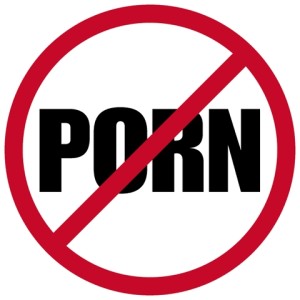The bishops of the United States gathered together last week for their annual meeting in Baltimore. One of the issues that they chose to address this year concerns what is perhaps the greatest ongoing threat to the spiritual and physical health of the Catholics in United States. It breaks up marriages, kills the state of grace, and in many cases destroys the possibility of vocations to the priesthood and to the religious life. It is a plague and its name is: pornography.
Pornography brings huge profits to those who make and market it commercially. Much of this kind of pornography issues from Los Angeles and unfortunately has spread not only throughout our nation but throughout the world, lending credence to those like Islamic extremists who denounce the West’s decadence. Although pornography is overwhelmingly marketed to and viewed by men, a substantial number of women also sample it out of curiosity and generally are disgusted by it (although a small number fall into the trap of using it themselves).
I write as a priest who hears thousands of confessions every year. When I was first ordained, the pornography that people confessed to using usually arrived at the person’s door in the form of magazines delivered to the house. Nowadays, virtually all pornography comes online, easily available to whoever wants to use it. The men addicted to it in this country number in the millions, and live in a fantasy world degrading to themselves and, in many cases, to their wives and girlfriends.
The Catechism of the Catholic Church tells us as Christians to be on guard against pornography. We are not only to avoid seeking it out and using it, but also to reject any image or thought that we may accidentally encounter – for example, when we innocently go to a movie that surprises us with an explicit sex scene.
What can be done? Perhaps the bishops will have some “micro” recommendations for individuals to adopt as well as “macro” recommendations for society-wide approaches. Pornography, of course, like other categories of sin, is nothing new and probably will exist until the end of time. However, the extent of the problem, the difficulty of avoiding contamination, and the threat it poses to the innocence of children is an unprecedented byproduct of our era’s technological progress and moral regression. It is a good sign that the Church in the United States is wrestling with this deadly product that kills souls by the millions here and abroad.
All Catholic families that want to bring up children with a healthy love of the goodness of sexuality, motherhood, and marriage should do everything possible to make their own homes pornography-free. In addition, all Catholic institutions of learning at every level should not neglect their duty to preach the beauty of chastity to their students, helping them to understand that the gravity of the abuse of sex is a consequence of its signal importance for God and for mankind: The attraction of male and female for one another, properly directed, allows human beings to participate in God’s plan of conceiving, bearing, and rearing human life. Part of God’s plan for peopling the heavenly realms with saved souls is the beauty of pure love and the holy marriages that come from such love.
I look forward to seeing how our bishops will handle this topic in the future. Using pornography not only harms the soul but also turns the user into a criminal, stealing something that does not belong to him. Consuming pornography causes many people to become addicted to it, and similar to other addictions, this one generally goads the addict into continually upping the dose and frequency to attain the same effect. It is no surprise, therefore, that pornography use can in some cases lead to rape, child abuse, and molestation.
Because consumption of pornography is often addictive as well as a sin, the addict of this deadly disease of the soul should not only confess this sin, but also seek professional help that can support their efforts to become porn-free.
As far as general methods go, we combat this kind of sin as we combat others. We begin by confessing our sins, and then, in the state of grace, we can receive the strengthening presence of Christ in the Eucharist. Devotion to the Blessed Mother is also a great help in combating impurity of all kinds. We should also take care to avoid the occasion of sin by putting a filter on our laptop or phone to prevent our accessing porn. Another aid is to never use a computer unless there is someone in the same room with you.
These are just a few ideas offered for those enmeshed in this kind of sinful behavior. Above all, as we approach the Year of Mercy announced by Pope Francis and beginning on the feast of the Immaculate Conception, repentant consumers of pornography, like any and all other sinners, should never despair of God’s mercy and forgiveness. They should never lose hope of the possibility of successfully freeing themselves from this enslavement, with the continuing help of God’s grace.
















